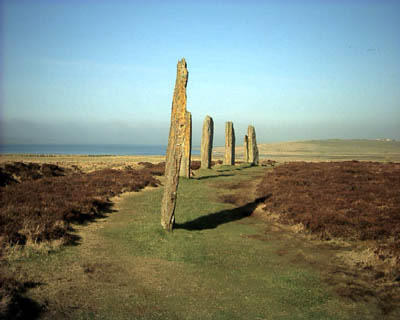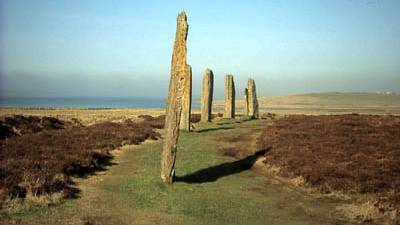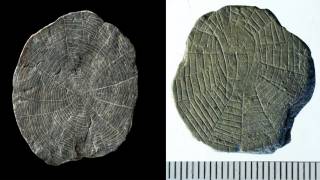Orcadian Stones
Source: philipcoppens.com
 Though the Orkneys are on the northern frontiers in Europe, they nevertheless form an integral part of the European megalithic civilisation – and are on par with monuments in the heartland of that civilisation. What was it that made the Orkneys exceptional?
Though the Orkneys are on the northern frontiers in Europe, they nevertheless form an integral part of the European megalithic civilisation – and are on par with monuments in the heartland of that civilisation. What was it that made the Orkneys exceptional?The Orkney Islands sit on the northern tip of the British mainland. It is rumoured that one inhabitant once wrote “Bergen, Norway” as his nearest train station, rather than Edinburgh – let alone London as the nearest capital. The islands seem remote and yet they are the centre of a megalithic community whose traces remain clearly distinguishable in the landscape.
The Ring of Brodgar, one of the highlights of any visit to the islands, has an area of 90,790 square feet (8,435 m2) and thus ranks third in size after the Outer Circle at Avebury and the Great Circle at Stanton Drew, in what many consider to be the true heart of the Megalithic World, the coastal areas of south-western England and French Brittany. Though Europe’s western facing Atlantic coasts, from Orkney down to Morocco, are known to have communicated throughout Megalithic times and are considered to be “one”, the question remains why this civilisation stretched so far north. Or to rephrase the problem: it is not odd to find megalithic monuments in the Orkneys, but why are they so monumental – on par with monuments found in the heartland of this civilisation? For some, it has lead to theories that suggest that the Orkneys were a staging post for ancient sea routes to the Americas – in Megalithic times – which is not that farfetched as the islands were indeed such posts in post-Columbian days. Today, it is known that this megalithic civilisation, from at least 3000 BC onwards, used the boat as the main means of transport and communication. Though it is thus possible that Atlantic crossings occurred, what is missing so far is proof that they did.
Why the Orkneys? What are the Orkneys? The name has been traced to the Picts, where the name is believed to come from Insi Orc, the islands of the tribe of the wild boar. This may be a clue – then again, it may not be.
What is known, is that the islands lacked timber, which meant that the houses were made in stone. Hence, settlements such as Skara Brae have survived across the millennia and provide us with a unique insight in the life of the megalithic builders in 3000 BC. But precisely because they had to build in stone, it should not be taken for granted that their lifestyle reflected that of communities elsewhere in Europe. Though Skara Brae is the most popular, the earliest house site was at Knap of Howar in Papa Westray. Skara Brae itself was inhabited from around 3100 to 2500 BC, an impressive 600 years. It now sits on the edge of the beach, but in olden days, would have been more inland and thus offered more protection from the elements that so often do not look benign on the Orkneys – the god of wind being the one that toys most with the islanders. The stone structure must have offered some protection, even though the weather in 3000 BC is believed to have been a few degrees warmer.
Read the rest of the story by Philip Coppens: here






















